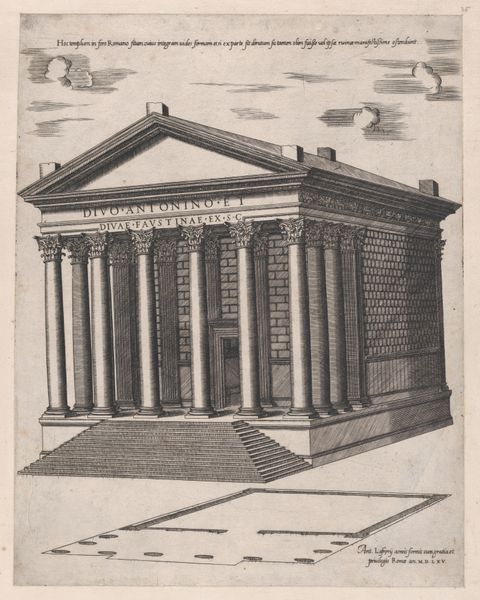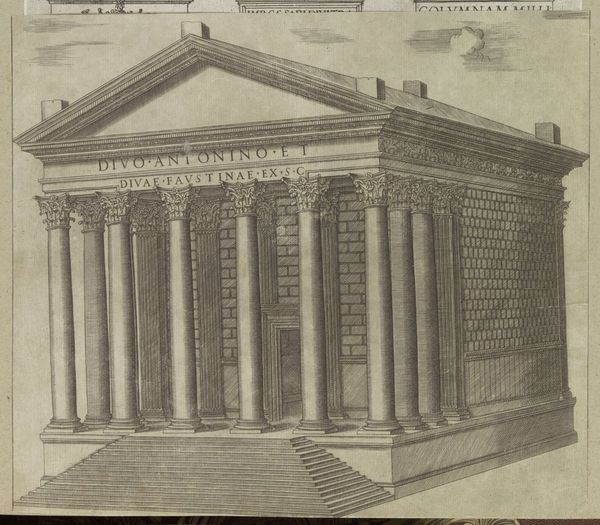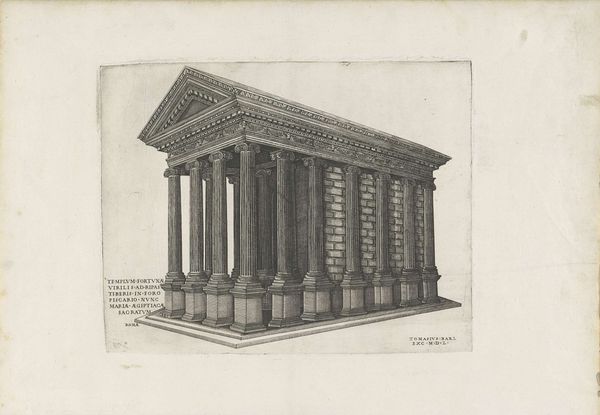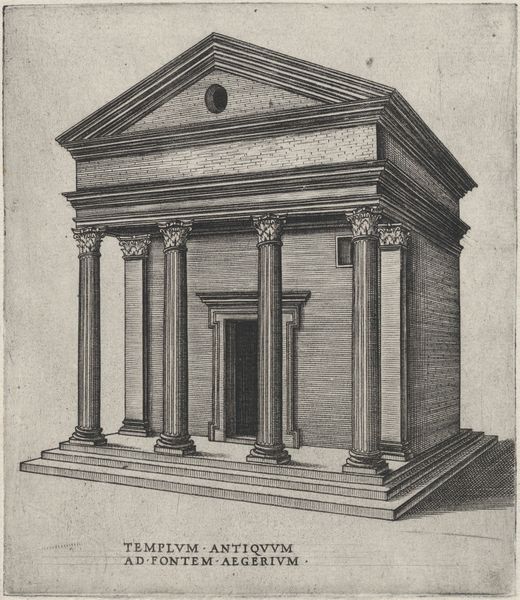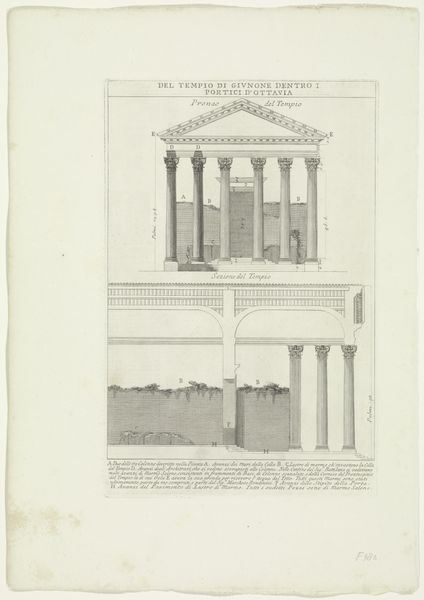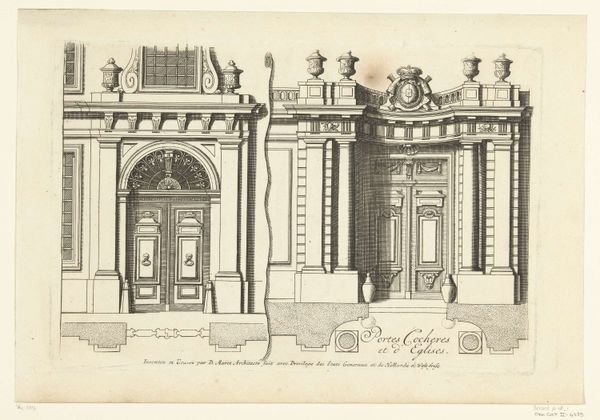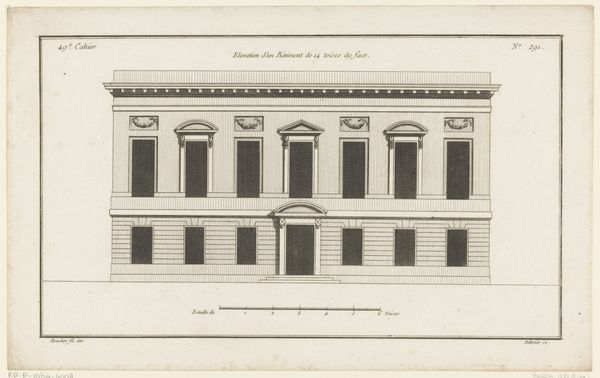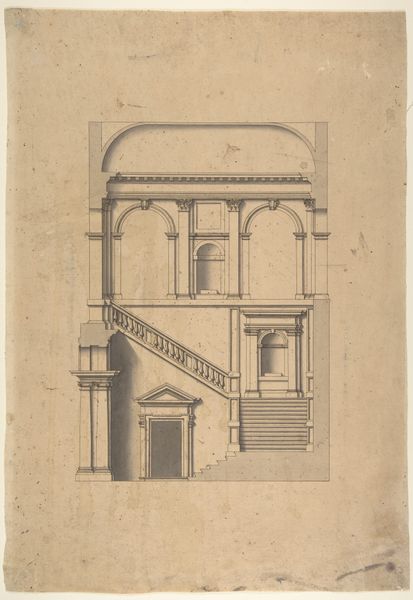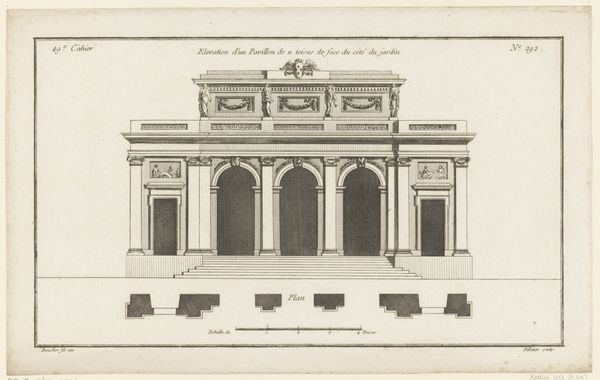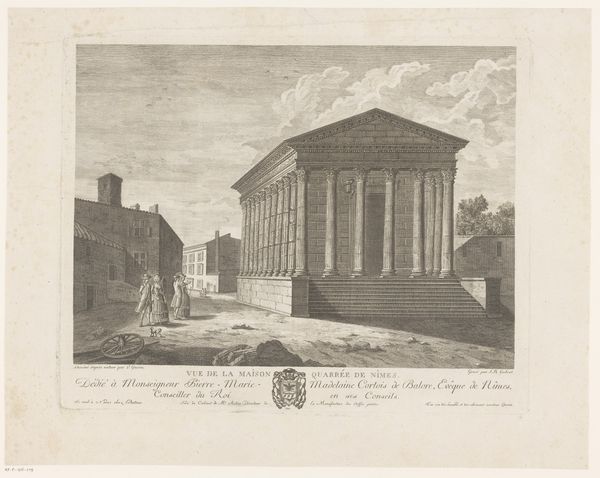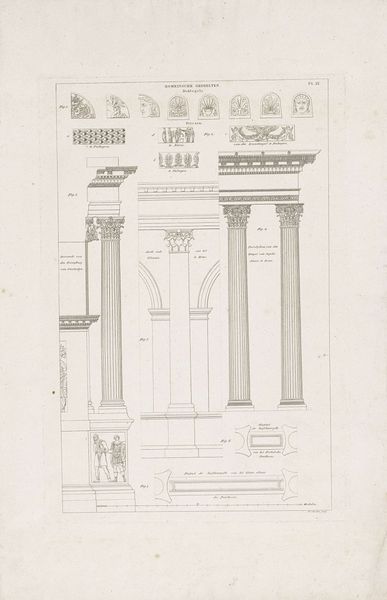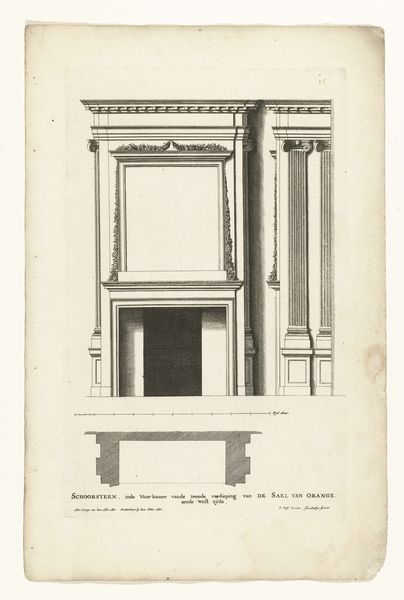
print, engraving, architecture
# print
#
old engraving style
#
form
#
old-timey
#
geometric
#
line
#
cityscape
#
history-painting
#
italian-renaissance
#
engraving
#
architecture
Dimensions: height 414 mm, width 325 mm
Copyright: Rijks Museum: Open Domain
Editor: So, this is an engraving from 1565, attributed to an anonymous artist, titled "Tempel van Antoninus en Faustina in Rome." It's incredibly detailed, and almost feels like an architectural blueprint more than a piece of art. What do you see in this print? Curator: I see a potent assertion of power and cultural continuity. This isn't just a rendering of a Roman temple; it's a 16th-century artist grappling with the legacy of the Roman Empire and situating themselves within it. Look at the precision of the lines – they convey a desire to understand, to master, and ultimately, to appropriate the grandeur of the past. How does the act of depicting Roman architecture, hundreds of years later, function politically? Editor: Appropriating the grandeur... That makes sense. It’s like saying, "We understand this; we can recreate it, therefore we inherit its power." Almost a colonial attitude towards time itself, maybe? Curator: Precisely. Consider the context: the Renaissance was obsessed with rediscovering and reclaiming classical antiquity. But who was allowed to participate in this “rediscovery?” How did the study and representation of classical forms reinforce existing power structures and exclude marginalized voices? This image is beautiful, but it's also a product of its time, complicit in certain historical narratives. What might the act of replicating it mean? Editor: I hadn’t really considered that. So, by studying this image, we're not just learning about Roman architecture, but also about the Renaissance's power dynamics and its relationship to the past. Curator: Exactly! We have to remember the political dimension, and interrogate how these representations can uphold or challenge structures of power. What do you think might have been included or excluded by an anonymous artist? Editor: That makes me think about what histories *aren't* being shown here and how this emphasis on Roman perfection is, in itself, a statement. Thanks; I’ll look at these kinds of architectural prints with a new perspective. Curator: Remember, every image, even seemingly objective architectural renderings, are charged with meaning and implicated in power dynamics.
Comments
No comments
Be the first to comment and join the conversation on the ultimate creative platform.
